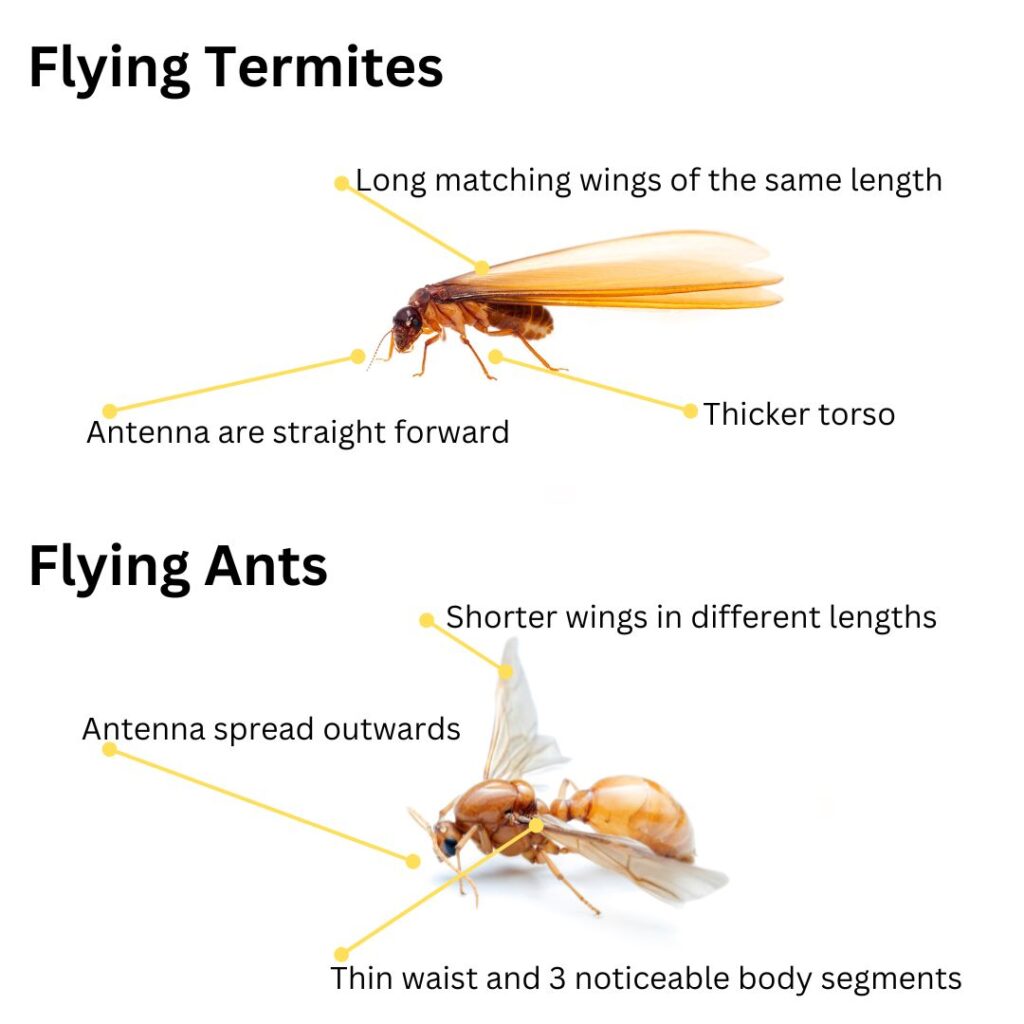Understanding the Lifecycle and Behavior of Flying Termites: Essential Insights
Flying termites, commonly known as “swarmers,” make their appearance when the seasons shift and humidity levels rise, particularly during the spring and early summer. During the colder months, these pests remain hidden, silently consuming wood and expanding their colonies, which can lead to severe structural damage if left unchecked. If you notice these swarmers in your home, it likely indicates that termite activity has been ongoing for several months. Gaining a comprehensive understanding of their lifecycle and behavior is crucial for implementing effective termite management and prevention strategies, ultimately protecting your property from potential destruction.
The combination of rising temperatures and subsequent rainfall often triggers large swarms of termites, sometimes numbering in the tens of thousands. While encountering such massive groups can be unsettling, the likelihood of these swarmers establishing a new colony nearby is relatively low. These insects are naturally attracted to light, which explains why you may often see them congregating around light fixtures in homes. Recognizing this behavior can help you remain calm and take the necessary precautions to protect your property from potential infestations effectively.
The Hills District, renowned for its lush bushland, provides an ideal habitat for termites. As you travel along Windsor Road towards Rouse Hill, you can observe numerous termite mounds scattered along the medium strip. This serves as a vivid reminder that the surrounding bushland offers abundant food sources for these pests. Homeowners in the vicinity should stay vigilant, as living close to these natural habitats significantly increases the risk of termite infestations infiltrating residential properties, potentially leading to costly repairs and extensive damage.
Essential Steps to Take When You Spot Flying Termites in Your Home
Stay Calm! Your home might not be under immediate termite threat!
Encountering flying termites should trigger protective measures rather than panic or the impulsive purchase of expensive termite control solutions. Here are several practical actions you can take to ensure your home remains safeguarded against these pests:
- Schedule Regular Inspections: If it’s been a while since your last professional termite inspection, now is the perfect time to arrange one. Annual inspections conducted by a licensed pest control technician are essential for early identification of potential termite issues, ultimately saving you from costly repairs down the line.
- Monitor Weather Patterns: Termites typically swarm on warm, humid nights, making it familiar to spot them during these favorable conditions. By staying vigilant and attentive to the weather, you can anticipate their activity and prepare accordingly to protect your property.
- Accurate Identification: Observe the swarmers closely—do their wings have uniform sizes? Are they flying in a distinct ‘swarm’ pattern or scattering randomly? Are their antennas straight or bent? Is their body shape consistent, or does it taper towards the waist? While flying ants and flying termites may appear similar, their physical characteristics are distinct, making accurate identification crucial for effective management and control.

Avoiding Common Pitfalls in Managing Flying Termites
While your instinct might be to address the issue on your own, certain actions could complicate future treatments and worsen the situation:
- Refrain from Spraying: Although spraying swarmers may eliminate visible termites, it fails to impact the underlying colony and could hinder effective future treatment strategies. It’s essential to address the root cause rather than just the symptoms to achieve long-term success in pest control.
- Avoid Sealing Exit Points: If you notice termites emerging from a hole in your walls, do not seal them off. Blocking their exit can force termites to burrow into new areas, potentially leading to increased damage to your home.
- Don’t Disturb Mud Trails: If you encounter mud tubes or trails, resist the urge to disturb them. Interfering with these structures can hinder a technician’s assessment and compromise their treatment plan, ultimately worsening the situation and increasing the risk of infestation.
Assessing the Termite Threat Level in Your Home
Seeing flying termites does not inherently mean that your home is infested. However, it serves as a valuable reminder to remain proactive in your pest management efforts. An annual termite inspection by a qualified professional is your best defense against potential infestations, allowing for early detection and timely intervention. While preventive measures may seem like an upfront investment, the costs associated with extensive termite treatment and subsequent repairs can be significantly higher than routine inspections, making them a wise decision for any homeowner.
Implementing Effective Strategies for Long-Term Termite Protection
Committing to regular annual termite inspections is the cornerstone of an effective pest control strategy. Moreover, adhering to the recommendations provided by your pest control technician for future prevention can further strengthen your protective measures, including:
- Timely refills of your reticulation system to ensure ongoing protection against potential infestations and to maintain an effective barrier.
- For homes equipped with baiting systems, schedule regular monitoring with your technician to ensure optimal effectiveness and allow for prompt adjustments when necessary.
- If your property lacks a termite barrier, consider investing in one to significantly enhance your defense against possible infestations, thereby protecting your investment.
Taking Timely Action: The Right Moment to Start Your Termite Treatment Journey
There is no wrong time to begin implementing preventive measures; however, it’s crucial not to wait until you observe swarmers to take action. When flying termites appear, there may already be hidden damage to your property that needs addressing. Initiating preventative steps now can help safeguard your home throughout the year, ensuring peace of mind and protecting your investment from potential threats.
At So Pest Off, we are committed to empowering you with informed, proactive choices regarding termite protection, steering clear of scare tactics and providing reliable solutions.
Contact us for dependable inspections and effective, transparent solutions tailored to your specific needs.
The post Flying Termites: Explore This Essential Action Plan appeared first on https://writebuff.com.
The Article Flying Termites: Your Essential Action Plan for Control Was Found On https://limitsofstrategy.com

